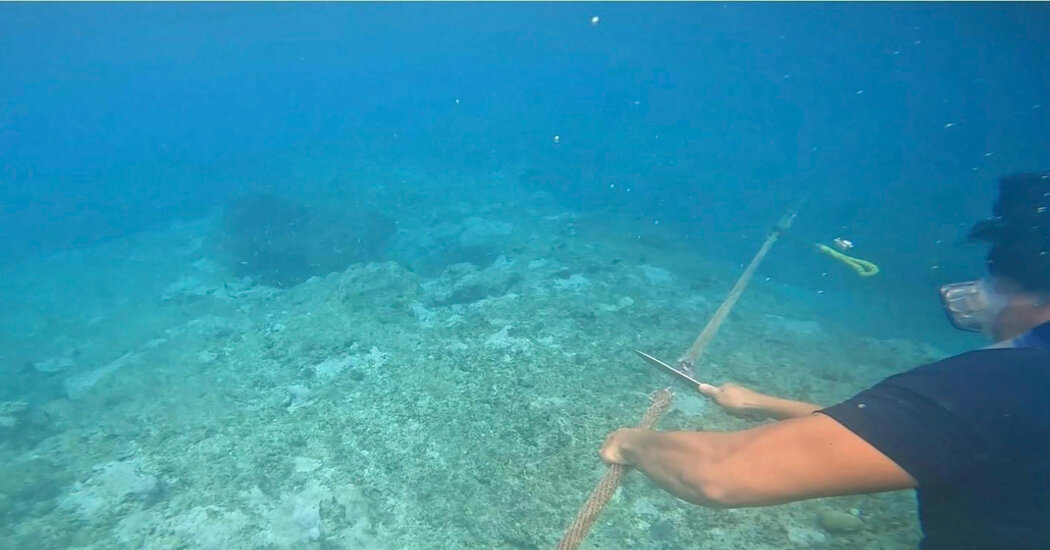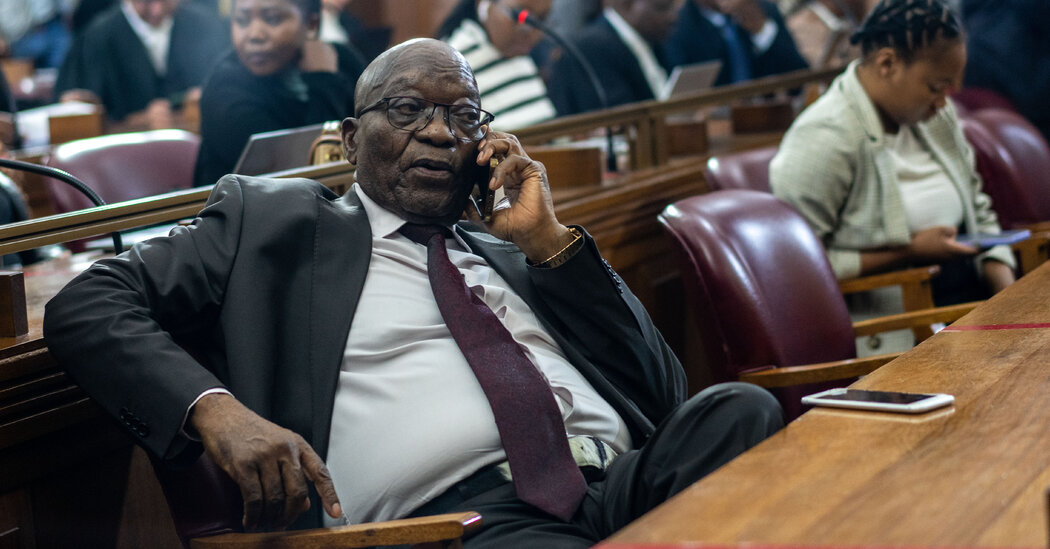Tensions in the South China Sea cross a line
A diver’s underwater cutting of a section of rope in the South China Sea, as shown in a short video clip this week, may seem too simple an act to qualify as a serious international incident.
But that diver was with the Philippine Coast Guard, and the rope was part of a barrier placed by Chinese forces to keep Philippine boats away from an area where they had a legal right to fish. In that moment, the Philippines took one of the most forceful steps yet in contesting China’s expanding territorial claims, which have moved ever closer to the Philippine Islands.
“The barrier posed a hazard to navigation, a clear violation of international law,” the Philippines said in a statement, adding that the action had come on direct orders from Ferdinand E. Marcos Jr., the country’s president. Marcos has signaled that he wants a more muscular foreign policy toward China, which has been mostly rhetoric until now.
Apprehension is rising about the risk of a direct clash between China and the Philippines and its allies, including the U.S. Navy fleet patrolling the region. But many analysts say China is likely to stop short of taking military action to avoid provoking the U.S.
Quotable: “It’s natural to feel fear because, should there be a conflict, we will be the first one to feel it,” said Leonardo Cuaresma, the president of the fishermen’s association in a Philippine municipality near where the barrier rope was cut.
Response: Yesterday, a spokesman for China’s foreign ministry brusquely dismissed the Philippines’ official statement. “We advise the Philippines not to cause provocation and cause trouble,” he said. After the rope was cut and the Philippines lifted the anchor that had kept it in place, China removed the barrier.
In China, the country wants to make its industrial heartland, in the northeast, more productive, hoping to stave off an economic slump. But Beijing is turning to policies that some economists say have outlived their time.
Ukraine admits doubts over Russian commander’s death
Ukraine’s military said it was “clarifying” whether Adm. Viktor Sokolov, the commander of Russia’s Black Sea Fleet, had died in a recent missile strike on Moscow’s naval headquarters in Crimea, acknowledging uncertainty after Russia released a video that appeared to show the commander at a meeting of top defense officials.
The authenticity and timing of the video, released by Russia’s Ministry of Defense, could not immediately be verified, but Russian state news media said the meeting took place yesterday.
In Odesa, Ukraine, young sailors are largely stuck on land as Russian warships control the coast, mines line the waterways and nearly all movement of civilian ships remains forbidden.
In the U.S., the government is sending ammunition made with depleted uranium to Ukraine, raising concerns over the material’s potential health and environmental effects.
Fuel depot blast kills 68 in Nagorno-Karabakh
Armenia’s health minister said yesterday that at least 68 people had been killed and 105 remained missing after an explosion on Monday at a fuel depot in the breakaway Nagorno-Karabakh region of Azerbaijan.
The cause of the explosion, which produced a large fire that lit up the night sky near the region’s capital, Stepanakert, was not immediately clear. Witnesses reported that the blast had occurred as people lined up to refuel their cars.
More than 28,000 people have fled the region for Armenia in the past week, after a sudden military offensive brought the enclave back under Azerbaijan’s control on Sunday.
THE LATEST NEWS
Around the World
Millions of years ago, the Ocucaje Desert in Peru was a gathering place for fantastical sea creatures: Researchers have found evidence of whales that walked, dolphins with walrus faces, aquatic sloths and the world’s heaviest animal. Now, humans are rushing in, and unplanned development is threatening this bounty.
ARTS AND IDEAS
Presidential portraits, this time for Africa
The American artist Kehinde Wiley shot to fame in 2018 with an unconventional presidential portrait: Barack Obama seated amid a bright, flowery background. Now, Wiley is again breaking the mold with portraits of 11 current and former African presidents in “A Maze of Power,” which opened Monday in Paris.
“I’m trying to look at the African presidency in images, because there is no tradition of it,” Wiley said. “There is no history surrounding it. The history surrounds Western European cultural hegemony and domination.”


